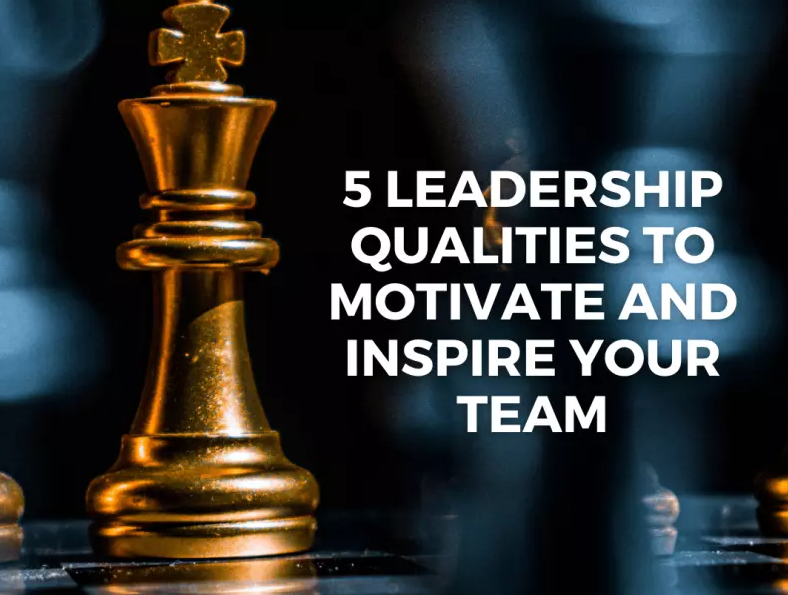Our jobs as leaders are to provide our teams with the tools to build and empower others.
Our WHY at Lead Vantage is the betterment of everyone. To keep this focus, we must measure how we show up and impact everyone around us. To do so, we ask ourselves several questions:
-
Are people happier because of our leadership?
-
Are they better today than yesterday because we encouraged their greatness to shine?
-
What trickle-down effect is our leadership having on our team members beyond their roles? Are they showing up as better spouses, parents, sisters, brothers, daughters, sons, and friends?
When we consider how we impact our teams in the day-to-day execution of our roles, can we think about the bigger picture, leaving the world slightly better than the day before?
How do you start? Easy! We have five adaptable steps you can follow to ensure you are motivating and inspiring your team to be their very best every single day.
Step 1: We start with intrinsic motivation, which begins from the inside out. One of our favourite things to do with our teams early is to sit down with them and ask them some simple questions:
-
What drives you? What is your purpose in life?
-
Where do you want to be or be doing in five years?
-
What do you value most in life?
Probe, listen, and encourage your teams to go deeper with their responses.
Reasoning:
-
We want to identify how to align their motivations with the company’s WHY, values, and strategy.
-
When we understand their purpose and goals, we can help them build their resumes internally rather than having them look for other external opportunities.
Step 2: We build relationships that are based on trust and mutual respect. We find ways to share our human side at work through vulnerability, humour, and honesty.
-
We start our days with ‘friendship talk.’ Our conversations are authentic, meaningful, and two-sided, swapping stories and catching up on life.
-
We utilize rapid response meetings to check in throughout the day to see how people are doing.
-
We encourage and insist on multiple breaks that get people away from their desks and out of the office.
Reasoning:
-
We want to create an environment where people feel comfortable and ‘at home’ when they walk through the front doors of our office; they exchange one homestead for another.
-
We want our colleagues to know they are supported and encouraged to ask for help and feedback.
-
People are only happy and productive with the opportunity to recharge their batteries, and we want them to know that it is not only ok but also expected.
Step 3: We co-create stretch goals with our team that align with step 1. Just like building a muscle, we aren’t growing if we are not occasionally uncomfortable.
-
We help people see their strengths, identify their growth opportunities, and challenge them to reach a little further than their comfort level.
-
We offer them autonomy to add flair to the task or project.
-
Throughout the challenge, we offer them support, coaching, and tools.
-
We rally the team to support each other collectively to move forward stronger and cohesively.
Reasoning:
-
Humans have a fundamental need to learn and grow. We want to be the organization that provides those opportunities, knowing our team will reap endless rewards in terms of self-satisfaction, improved self-esteem, growth, and general happiness.
-
Offering growth opportunities means our team won’t look at other organizations to grow their resumes. Instead, they know they will obtain long-term goals in their current homestead.
Step 4:
We invest in their career development by offering consistent and regular feedback. Every human craves mentorship and connectedness.
-
We are never short on praise and lean into difficult conservations, always in a timely fashion.
-
We offer feedback to link behaviour to outcomes, so we focus on impact; how that impacts them, others, and the company.
-
We ask questions to learn and understand and check our egos at the door.
-
We share our own stories, wins, and losses, and we recognize that failure only means the ‘first attempt in learning.’
Reasoning:
-
People can correct behaviour if they know how or why to shift course.
-
Learning is fun, challenging, scary, and overwhelming. Knowing the stories of others help makes it easier and surmountable.
-
You build trust when you recognize hard work and have hard conversations that are not easy for anyone.
Step 5:
We know behaviour changes behaviour. So, following steps one through four, we demonstrate to our team how fundamental this structure is for their development. In turn, they will do the same for the people they lead. By demonstrating the behaviours we want to see in our workplace, we are ‘teaching our team how to fish’ rather than feeding them daily.
-
Our internal performance measures focus on the impact we have on our colleagues.
-
We are clear on our expectations around everyone’s contributions to our WHY, which is the betterment of everyone.
Reasoning:
-
Everyone needs to row in the same direction to ensure we meet our business objectives.
-
To meet our business objectives, we need a fulfilled and engaged team whose purpose aligns with our company’s core values.
We encourage all companies to focus on these five steps to engage and inspire their teams. Which of the five steps do you well? Which five steps could use some polish or concentration in your organization?




